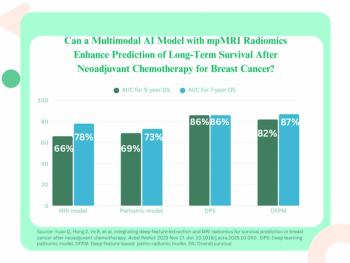
Imagers await 3T endorectal coils for prostate exams
Under the best of circumstances, 3T imaging of the prostate with a body coil can approximate the level of detail and sensitivity available at 1.5T with an endorectal coil. Researchers hope that with a 3T-oriented endorectal coil they will finally be able to take advantage of 3T's higher resolution in a challenging portion of the anatomy.
Under the best of circumstances, 3T imaging of the prostate with a body coil can approximate the level of detail and sensitivity available at 1.5T with an endorectal coil. Researchers hope that with a 3T-oriented endorectal coil they will finally be able to take advantage of 3T's higher resolution in a challenging portion of the anatomy.
Three studies presented at the ECR compared 1.5T and 3T imaging, and, overall, the researchers gave the nod to 1.5T, based on coil availability. Dr. Dirk Beyersdorff from Charite Hospital in Berlin imaged 24 patients at both field strengths, comparing an endorectal coil at 1.5T with a body coil at 3T. The 1.5T images were clearer, and peripheral and extracapsular lesions were easier to identify consistently.
"Until a 3T coil is available, 1.5T will remain the gold standard," Beyersdorff said. "The endorectal coil is the most important advancement we are waiting for."
In a similar study of 30 patients at the University of Modena, Italy, 1.5T imaging identified six of seven extracapsular tumors, compared with five of seven for 3T. The overall sensitivity and specificity for 1.5T were 85% and 83%, respectively, compared with 71% and 83% for 3T.
Commercial release of a 3T endorectal coil from Medrad is expected later this year, said session moderator Dr. Hedvig Hricak, chair of radiology at Memorial Sloan-Kettering Cancer Center.
At the University of Nijmegen, the Netherlands, which has worked with an experimental version of the coil, sensitivity for prostate masses increased from 68% to 87% for experienced readers, said lead researcher Dr. Jurgen Futterer.
Despite the presumed clarity of 3T endorectal coil imaging, it won't be the answer for everything, Hricak said. While it may play an important role in initial staging, body coil imaging will be the preferred technique for planning and monitoring radiation therapy so that the coil does not interfere with mapping the shape and location of the prostate and surrounding tissue.
Newsletter
Stay at the forefront of radiology with the Diagnostic Imaging newsletter, delivering the latest news, clinical insights, and imaging advancements for today’s radiologists.




























